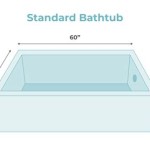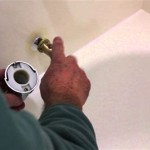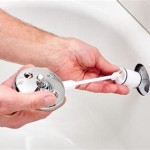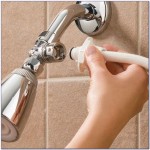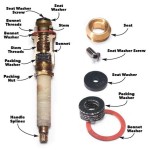Understanding Free Standing Bathtub Dimensions
Free standing bathtubs have surged in popularity, transforming bathrooms into spa-like sanctuaries. Their aesthetic appeal and design flexibility make them a preferred choice for homeowners and designers alike. However, selecting the right free standing bathtub involves careful consideration of various factors, particularly its dimensions. Understanding the standard sizes, variations, and spatial requirements is crucial to ensure a comfortable and functional bathing experience.
This article will delve into the intricacies of free standing bathtub dimensions, covering typical size ranges, factors influencing size selection, and the importance of considering bathroom space and plumbing requirements. It will provide a comprehensive guide to assist in making informed decisions when choosing a free standing bathtub.
Standard Free Standing Bathtub Dimensions
While free standing bathtubs come in a vast array of shapes and sizes, some dimensions are considered relatively standard. These standard dimensions serve as a starting point for evaluating what might best fit a particular bathroom layout and user needs. Understanding these standard dimensions allows for easier comparison between different models and manufacturers.
The most common length for a free standing bathtub falls within the range of 60 to 72 inches (152 to 183 cm). This length is often suitable for individuals of average height, providing ample space for comfortable reclining. However, lengths can extend beyond 72 inches for larger models designed for taller individuals or dual bathing.
Width generally ranges from 27 to 32 inches (69 to 81 cm). This width provides comfortable space for the bather without being excessively wide, which could make reaching the water controls difficult. Wider tubs are available, but they require a larger bathroom and careful consideration of surrounding fixtures and passageways.
The height of a free standing bathtub usually falls between 24 and 32 inches (61 to 81 cm). This height allows for a comfortable soaking depth while maintaining accessibility for entering and exiting the tub. Taller tubs offer deeper soaking experiences, but may pose challenges for individuals with mobility issues.
These dimensions represent the external measurements of the bathtub. The internal dimensions, specifically the soaking depth and length of the inner basin, should also be considered to ensure a comfortable fit for the user.
Factors Influencing Free Standing Bathtub Size Selection
Choosing the right size free standing bathtub involves evaluating several key factors. These factors include the available bathroom space, the bather's physical dimensions, the desired bathing experience, and the overall aesthetic goals for the bathroom design.
Bathroom Space: The size of the bathroom is the most crucial factor. A large bathtub in a small bathroom will overcrowd the space, making it feel cramped and uncomfortable. Conversely, a small bathtub in a large bathroom may look disproportionate. It is essential to measure the available space accurately and consider the placement of other fixtures, such as the toilet, sink, and shower. Sufficient space needs to be allocated around the bathtub for comfortable movement and cleaning.
Bather's Physical Dimensions: The height and build of the primary user of the bathtub should be considered. A taller individual will require a longer tub to fully stretch out and relax. Similarly, someone with a broader frame may need a wider tub for comfortable soaking. Ideally, the bather should be able to recline comfortably in the tub with their shoulders and neck supported.
Desired Bathing Experience: The intended use of the bathtub influences the size selection. If the primary goal is relaxation and deep soaking, a deeper tub with a longer length may be preferred. For those who primarily use the bathtub for quick showers, a smaller, more compact model might suffice. Some free standing bathtubs are designed with ergonomic features, such as built-in backrests and armrests, which can enhance the bathing experience.
Aesthetic Goals: The bathtub serves as a focal point in the bathroom. Its size and shape contribute significantly to the overall aesthetic. A larger, more sculptural bathtub can create a dramatic statement, while a smaller, more minimalist model can blend seamlessly into a contemporary design. The color and material of the bathtub should also complement the existing bathroom décor.
Beyond these core factors, it's important to consider potential future needs. A larger tub might be preferable if there's a possibility of resale or if the family anticipates growing in the future. Consider if you foresee any mobility challenges as you age – a tub with a lower step-over height may be a better long-term choice.
Spatial Requirements and Plumbing Considerations for Free Standing Bathtubs
Proper installation of a free standing bathtub requires careful planning and consideration of spatial requirements and plumbing needs. Unlike alcove bathtubs, free standing models are not confined by walls, necessitating dedicated space for access and servicing. Adequate plumbing connections are also essential for ensuring proper water supply and drainage.
Spatial Planning: It is generally recommended to leave at least 24 inches (61 cm) of clearance around the bathtub for comfortable movement. This clearance allows for easy access for cleaning, entering and exiting the tub, and performing maintenance. In smaller bathrooms, this clearance may be reduced, but it is important to ensure that there is still sufficient space to move around comfortably.
Plumbing Connections: Free standing bathtubs typically require floor-mounted or wall-mounted faucets. Floor-mounted faucets require plumbing connections beneath the floor, which may necessitate cutting into the floorboards. Wall-mounted faucets require plumbing connections within the wall, which may require relocating pipes. The drain connection also needs to be carefully considered. Free standing bathtubs often use exposed drains that connect to the existing plumbing system. The placement of the drain should align with the existing drain location in the bathroom to minimize plumbing modifications. It is always advisable to consult with a qualified plumber to assess the plumbing requirements and ensure proper installation.
Floor Support: The weight of a free standing bathtub, especially when filled with water, can be substantial. It is essential to ensure that the floor is capable of supporting the weight of the bathtub. If the floor structure is weak or unstable, it may be necessary to reinforce it to prevent sagging or damage. A structural engineer can assess the floor's load-bearing capacity and recommend appropriate reinforcement measures.
Accessibility: It's important to consider accessibility when planning the layout. While free standing tubs offer visual appeal, they can sometimes present challenges for individuals with mobility limitations. Consider the step-over height of the tub and whether grab bars or other assistive devices are necessary. The surrounding floor surface should also be slip-resistant to prevent falls.
Proper venting is also critical for preventing sewer gases from entering the bathroom. Ensure that the plumbing system is adequately vented to prevent drain clogs and unpleasant odors.
Finally, consider the ease of maintenance. Leaving adequate space around the tub allows for easy cleaning. Also, choose materials that are resistant to staining and easy to wipe down. Regular cleaning helps to prevent the buildup of mildew and grime, keeping the tub looking its best.
Careful consideration of these spatial and plumbing requirements is crucial for ensuring a safe, functional, and aesthetically pleasing free standing bathtub installation. Consulting with professionals, such as plumbers, contractors, and interior designers, can help to navigate the complexities of the installation process and ensure a successful outcome.

Freestanding Bathtub Dimensions A Sizing Guide With Faqs

Home Decorators Collection Coniston 60 In Acrylic Freestanding Flatbottom Bathtub White With Overflow And Drain Brushed Nickel Included Gbba019 The Depot

A E Bath Una 71 Freestanding Tub

Alvana 67 Deep Soaking Bathtub Solid Surface Freestanding

Zey 59 In X 30 Acrylic Freestanding Soaking Bathtub Flatbottom Oval Stand Alone Tub With Removable Drain White

Duravit No 1 Freestanding Bathtub Saniterica

51 In X 27 5 Acrylic Free Standing Soaking Bathtub Modern Flatbottom Freestanding Alone Soaker White

Getpro 59 In X 29 5 Acrylic Free Standing Bathtub Flat Bottom Soaking Tub With Center Drain Freestanding Black Gp 325r 59mb The Home Depot

55 Acrylic Free Standing Tub Classic Oval Shape Soaking With Chrome Pop Up Drain Anti Clogging Adjustable Freestanding Bathtub Integrated

Mokleba 59 Oval Solid Surface Freestanding Soaking Tub Brown
Related Posts

